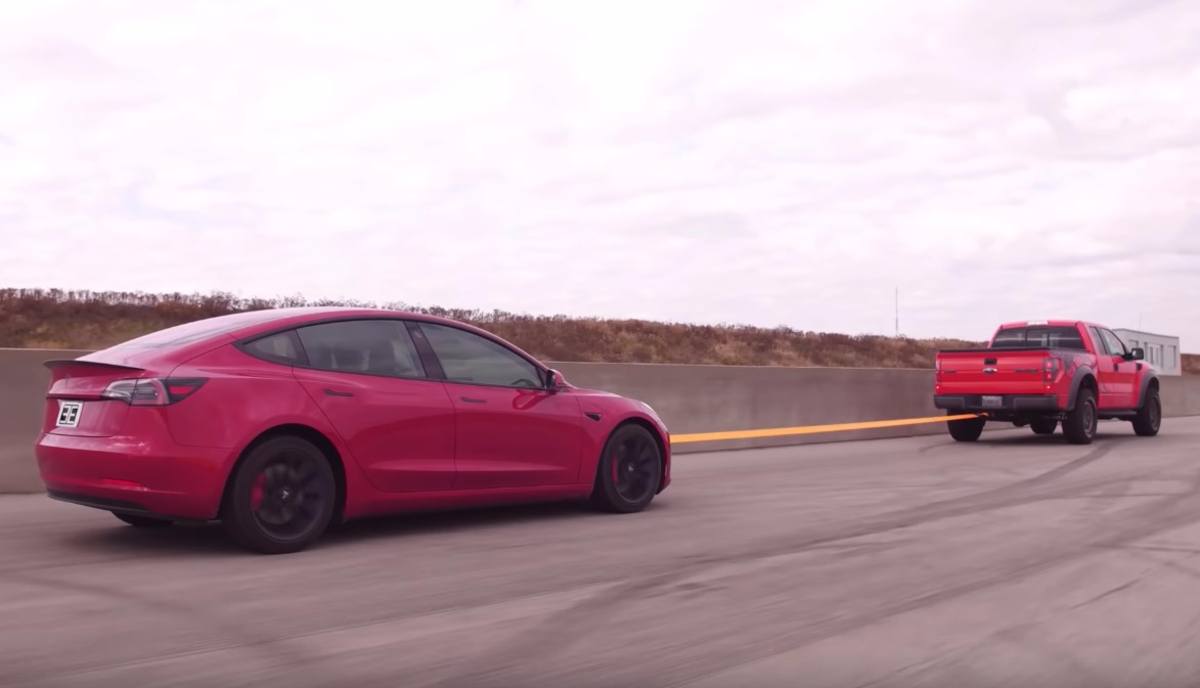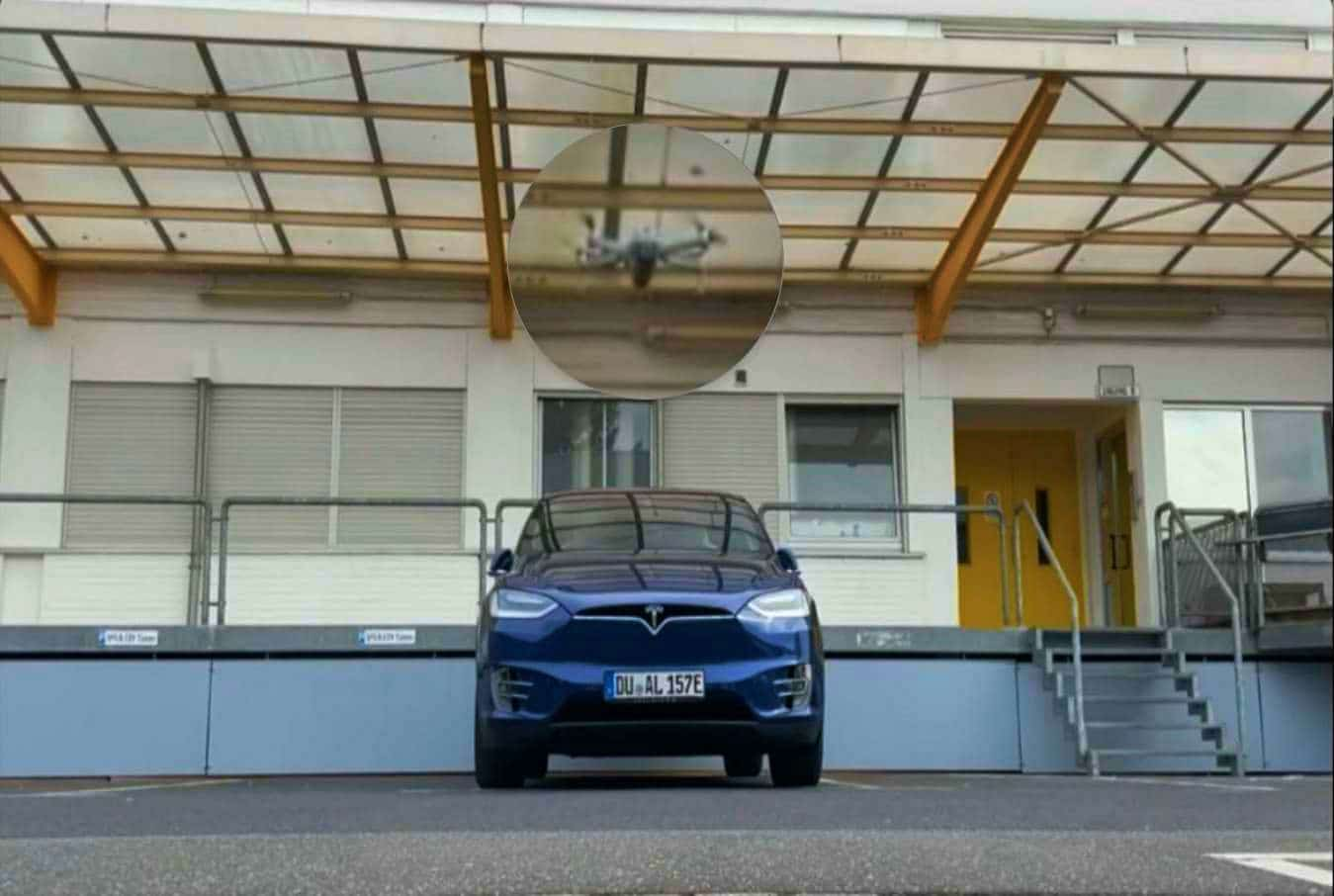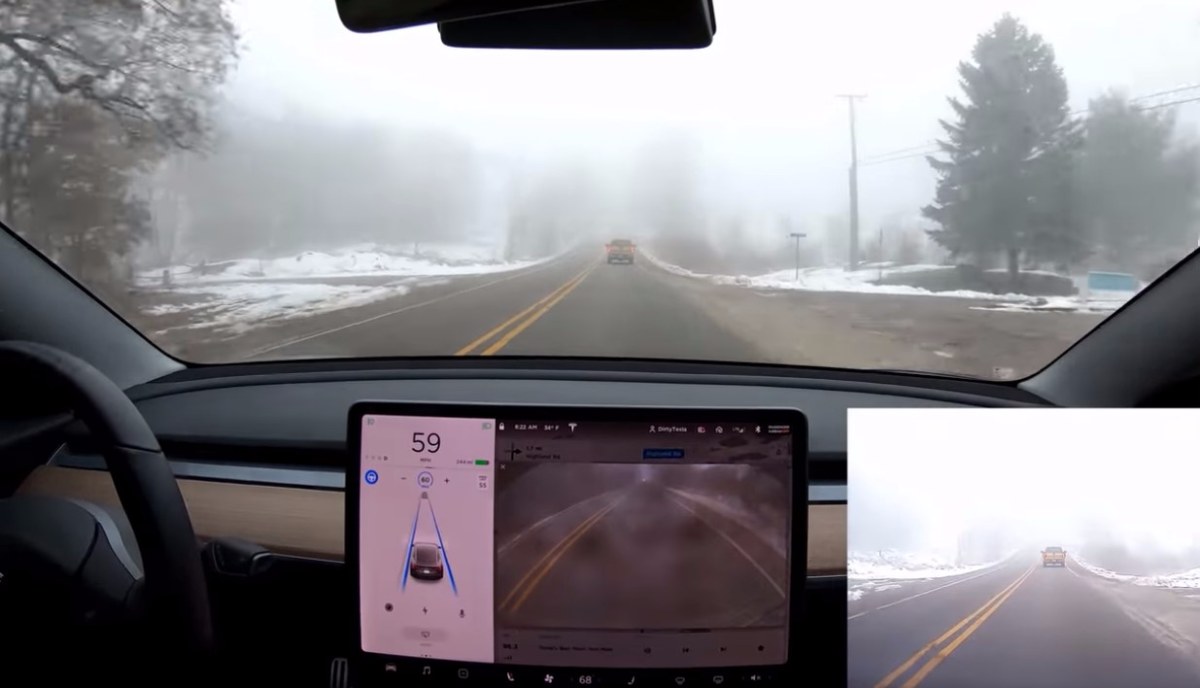In one of the most genius experiments, a Tesla Model 3 was charged by being towed using a Ford F-150 Raptor and the results will make you question what you know about thermodynamics.
On a serious note, the experiment didn’t break any laws of Physics, in fact, it proves just how significant regenerative braking and aerodynamics are in increasing efficiency of the Tesla Model 3.
The experiment was conducted by Jason Fenske, who runs a popular YouTube channel called Engineering Explained. In his experiment, he answered a number of questions including “what is more efficient? To drive a Ford F-150 Raptor alone or tow a Tesla Model 3 behind it and recharge it and then drive it?”
Here’s how things played out.
Tesla Model 3 Vs Ford F-150 Raptor Efficiency Test
In the first round of testing, Jason and his friends tried to find the answer to two main questions, “Can you recharge a Tesla by towing it?” and which is more efficient: “To drive a Raptor from point A to point B?” or “Use that raptor to charge a Tesla and take that Tesla to wherever you’re going?”
Jason tied the Tesla Model 3 at the back of the Ford F-150 Raptor and his friend drove the truck around for a single lap. At the start of the lap, the Tesla Model was at 62% charge and just after traveling a few meters the Model 3 gained around 740 Wh/km of charge.
By the time the lap ended, the Tesla Model 3 had gained about 1,019 Wh/km, or around 1 kW of energy using regenerative braking with an additional 2% of electric battery charge at 64%. The Raptor was driving at a constant speed of 30km/h while towing the car.
Jason then drove the recharged Model 3 around the same track. The electric car completed the lap with around 165 Wh/km of remanent charge. Also, keep in mind that Jason drove the car quite aggressively around the track and still managed to save some electric charge at the end of the lap.
Now, at first glance, it might not be clear how energy is being converted three times, from fuel in Raptor to regen in Tesla and from its battery to its electric motor.
“When you’re pulling it’s (the Model 3) it’s basically braking really hard, so you’re pulling something that’s taking the kinetic energy of what speed the car is at constantly,” explains Jason.
He then conducted another test to find out which vehicle returned most miles on a single gallon of fuel and in which way. Is it more efficient for the Raptor to travel alone on one gallon of fuel or tow a Tesla Model 3 and recharge it as well?
On its own, while driving around the track, the Ford F-150 raptor delivered a fuel efficiency of 22 liters per 100 km or 10.8 mpg. While Tesla Model 3 took 193 Wh/km, which is equivalent to 2.2 liters per 100 km or 108.5 mpg.
While towing the Tesla Model 3 the raptor gave a fuel efficiency of 69 litre/100 km or 3.4 miles per gallon. However, during the process of being towed, the Tesla Model 3 gained enough energy to travel 18.1 miles.
“So 1 gallon of fuel in a Raptor will allow you to recharge your Tesla for 18.1 miles. So it is more efficient to tow the Raptor with the Tesla than to drive the Raptor by itself.”
Which Is More Efficient?
So to recap, the Ford Raptor travels around 10.8 miles/gallon of fuel when driving on its own. Tie a Tesla Model 3 behind it and its fuel efficiency is reduced to just 3.4 miles per gallon, but it recharges the Tesla to drive an additional 18.1 miles.
Therefore the total distance traveled equals 21.5 miles.
It is one hell of an experiment and the results might baffle some puny person’s brain as they did it to me. However, Jason explained that while towing Tesla the Ford Raptor is facing a huge amount of drag as it is less aerodynamic and weighs a lot more than the electric car.
Model 3, on the other hand, is very aerodynamic and therefore delivers high fuel efficiency after being recharged.
I hope you’re still with me after all these calculations. And if I did a poor job in explaining this beautiful experiment, watch Jason’s video above to get a better idea about things.










